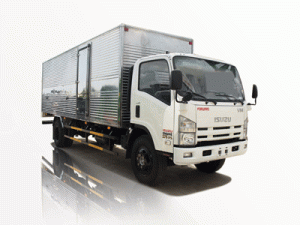Monday to Saturday - 8:00 -17:30
Understanding the Fire Engine Tank: Essential Insights and Guidance
Introduction
When it comes to emergency response, few vehicles are as crucial as fire engines. At the heart of these powerful machines lies the fire engine tank—an essential component that plays a vital role in firefighting. The fire engine tank is designed to store water and other materials needed to combat fires effectively. In this article, we will explore the intricacies of fire engine tanks, their types, functionalities, maintenance tips, and much more. Whether you’re an aspiring firefighter, a fire safety enthusiast, or simply curious about fire engines, this comprehensive guide will deliver valuable insights.
1. What is a Fire Engine Tank?
A fire engine tank is a specialized container mounted on a fire truck, designed to store water and firefighting agents. It is crucial for ensuring that firefighters have immediate access to water at the scene of a fire, allowing them to respond quickly and effectively.
1.1 The Importance of Fire Engine Tanks
Fire engine tanks significantly enhance an engine’s firefighting capabilities. They allow firefighters to fight fires in areas lacking a reliable water source, ensuring that they can combat flames without delay. For instance, in rural settings, water sources may be scarce, and having a robust tank on hand can make all the difference.
1.2 Components of a Fire Engine Tank
- Tank: The main storage unit that holds the water or other extinguishing agents.
- Pump: Responsible for delivering water from the tank to the fire hose.
- Valves: Control the flow of water, allowing firefighters to manage water output efficiently.
- Hoses and Nozzles: Used to distribute water to combat fires.
2. Types of Fire Engine Tanks
Fire engine tanks come in various configurations depending on their intended use. Understanding these types can help in selecting the right tank for specific firefighting scenarios.
2.1 Water Tanks
The most common type of fire engine tank, water tanks are designed primarily to hold water. They come in different capacities—typically ranging from 500 to 3,000 gallons—depending on the size and type of fire engine.
2.2 Foam Tanks
Foam tanks are specifically designed to hold firefighting foam, which is crucial for fighting flammable liquid fires. These tanks support a mix of water and a foam concentrate to create a blanket that smothers fires.
2.3 Combination Tanks
Some modern fire engines utilize combination tanks that can hold both water and foam. This versatility allows firefighters to switch between water and foam based on the fire type they face.
3. How Fire Engine Tanks Work
To grasp the fire-fighting process, it’s important to understand how fire engine tanks operate in conjunction with other equipment.
3.1 Filling the Tank
Fire engine tanks are typically filled at water sources such as hydrants or ponds. The engine’s pump can fill the tank quickly, and this can often be done while en route to an emergency.
3.2 Water Distribution
Once at the fire scene, firefighters can deploy the pump’s pressure to send water through hoses and nozzles, effectively distributing it to combat fires. The system can be controlled manually by the firefighter to ensure precision.
4. Factors Influencing Tank Size and Design
The design and size of a fire engine tank are not arbitrary; several factors influence these elements.
4.1 Type of Fires
Different fires require different firefighting approaches. For example, structures typically need a larger volume of water compared to vehicle fires. This dictates tank size and design.
4.2 Fire Department Requirements
The specific needs of the fire department—local geography, typical emergencies, and budget—affect tank design and capacity greatly.
5. Maintenance of Fire Engine Tanks
Regular maintenance is essential to ensure the longevity and effectiveness of fire engine tanks.
5.1 Routine Inspections
Fire departments should conduct routine inspections to check for leaks, tank integrity, and system functionality. This can prevent costly repairs and ensure readiness during emergencies.
5.2 Cleaning and Flushing
It’s important to clean the tank annually and flush it out to remove contaminants, ensuring that the water stored is suitable for firefighting.
6. Common Challenges with Fire Engine Tanks
Fire engine tanks are not without challenges. Understanding these ensures better preparedness.
6.1 Leakage Issues
Leaks can compromise the firefighting capabilities of a tank. Regular inspections help identify potential problems early.
6.2 Corrosion and Damage
Corrosion can occur due to water chemistry and environmental conditions. Tanks made from specific materials can help mitigate this risk.
7. Innovations in Fire Engine Tank Technology
The firefighting industry continually evolves, with new technologies improving tank efficiency and functionality.
7.1 Lightweight Materials
New lightweight and corrosion-resistant materials are making tanks more durable and easier to handle.
7.2 Integrated Monitoring Systems
Emerging technology allows real-time monitoring of tank levels and integrity, sending alerts for any issues detected.
8. Practical Tips for Firefighters
Whether you’re a seasoned firefighter or a newcomer, these practical tips will enhance your understanding and operation of fire engine tanks.
8.1 Familiarize Yourself with the Equipment
Know the specifications and handling of the fire engine tank and pump systems to respond efficiently.
8.2 Prioritize Safety
Always wear proper protective gear and ensure that all equipment is serviced and up to date.
9. Fire Engine Tank Regulations and Standards
A variety of regulations govern the design and operation of fire engine tanks, ensuring safety and effectiveness.
9.1 NFPA Standards
The National Fire Protection Association (NFPA) sets guidelines for tank construction, maintenance, and operation. Understanding these ensures compliance and safety.
9.2 Local Regulations
Always check your local laws and regulations regarding fire engine equipment to ensure compliance with specific regional requirements.
10. FAQ about Fire Engine Tanks
10.1 What materials are fire engine tanks usually made of?
Fire engine tanks are often constructed from steel, aluminum, or composite materials designed to withstand pressure and corrosion.
10.2 How do fire engine tanks get filled?
Fire engine tanks can be filled at fire hydrants, water points, or natural water sources, utilizing a pump to speed up the process.
10.3 What is the typical capacity of a fire engine tank?
Most fire engine tanks range from 500 to 3,000 gallons, depending on the fire engine’s design and intended use.
10.4 How do firefighters test the functionality of a fire engine tank?
Firefighters perform routine checks and tests, including visual inspections for leaks, pressure tests, and ensuring the pump is operational.
10.5 Can fire engine tanks be repaired?
Yes, most tanks can be repaired if they develop leaks or damage; however, some severe issues may require tank replacement.
10.6 How often should fire engine tanks be inspected?
Fire engine tanks should ideally be inspected at least once a year, or more frequently if the tank is in heavy use or has had previous issues.









